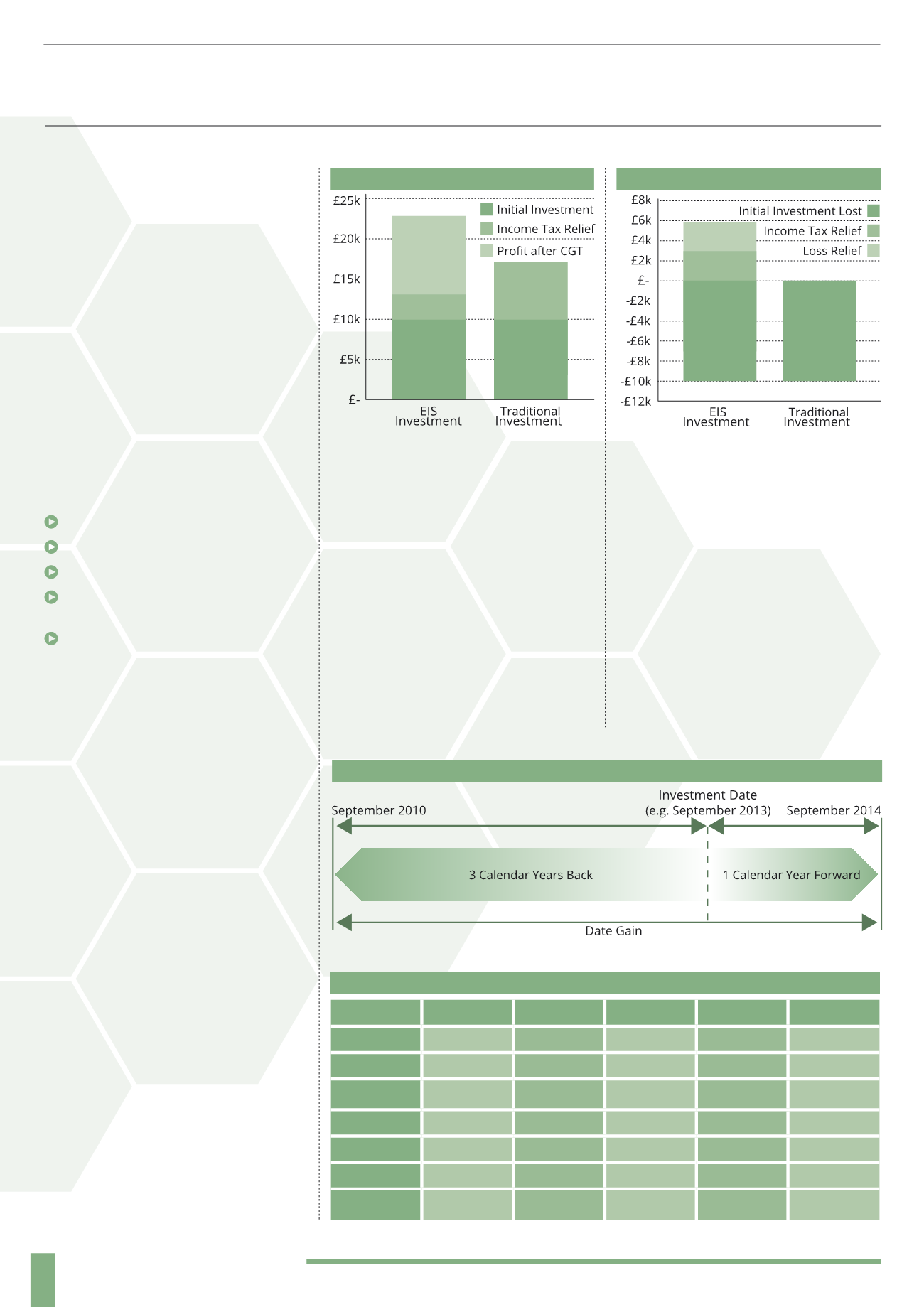
16
The Enterprise Investment Scheme is
designed to encourage private investment
in small and medium sized companies. Not
necessarily start-ups, but companies that
are seeking capital for business activities
such as entering new markets, scaling up
the business or launching a new product.
Generous tax benefits make investing in
smaller companies that are EIS qualifying
more attractive and help to tilt the risk
profile of the small company sector
back in favour of the investor. HMRC has
undertaken a lot of anti-avoidance and
anti-abuse activities in recent years – this
means advisers need to be 100% confident
that any tax efficient investment options
that they utilise for their clients
are legitimate.
SUMMARY OF BENEFITS
Income Tax relief of 30%
No Capital Gains Tax
CGT incurred elsewhere can be deferred
Losses can be offset against either
Income or Capital Gains Tax
Potential for Inheritance Tax Relief
(through business property relief after
holding the shares for 2 years)
BENEFITS IN DETAIL
INCOME TAX RELIEF
Investors get Income Tax relief of 30%. An
investment of £10,000 allows an investor
to reduce their Income Tax bill by £3,000.
This relief can also be carried back into
the previous tax year, which means the
cost of the shares is treated as though
they had been acquired in the previous
year, and relief is given to the Income Tax
liability of that year. This can be useful to
mitigate an unusually high tax bill from
the previous year or simply to access the
relief while it’s available, as once it’s gone
it cannot be reclaimed in the future.
Note that any dividend income from EIS
qualifying investments will be taxed at the
investors’ marginal rate, hence profits are
usually rolled up and paid as a capital gain.
CAPITAL GAINS TAX RELIEF
There is no Capital Gains Tax on any profits
from an EIS investment. An investment
profit of £10,000 goes directly to the
investor without being taxed, saving at least
£1,800 (CGT at 18%) for an ordinary rate
tax payer.
CAPITAL GAINS TAX DEFERRAL
Tax on capital gains incurred elsewhere
can be deferred if the gain is invested in
an EIS qualifying company. There is a four
year window to defer the tax – so the tax
on any gains made three years prior to the
EIS investment or one year after can be
deferred. Deferral relief is unlimited, can be
rolled over from one investment to the next
and can go on indefinitely. However, if and
when the investment is realised, the Capital
Gains Tax is payable once again. Note that
CGT is eliminated if the shares are still held
at death. Investors may look to sell their
investments over a number of years to
take advantage of more than
one years’ CGT allowance.
LOSS RELIEF
Investment losses can be offset against
either Income or Capital Gains Tax. For
a £10,000 investment that was a 100%
loss, because of Income Tax relief, the
actual loss is only £7,000 (£10,000-
£3,000). Forty percent of that loss of
£7,000 (for a higher rate taxpayer) can
be used to reduce the taxable income
for the year in which the shares were
disposed, resulting in a saving of £2,800
and a total loss of only £4,200 (42%).
EIS BENEFITS AND RISKS
BENEFITS OF TAX RELIEF
BENEFITS OF LOSS RELIEF
CAPITAL GAINS DEFERRAL RELIEF
New ISA
SIPP
VCT
EIS
SEIS
Annual Limit £15,000
£40,000
£200,000
£1,000,000 £100,000
Lifetime Limit
£1,250,000
Income Tax
Relief
0%
40%
30%
30%
50%
Loss Relief
0%
0%
0%
Up to 40%* Up to 40%*
IHT Rate
40%
55%
40%
0%
0%**
CGT Rate
0%
0%
0%
0%
0%***
Tax Free
Lump Sum 100%
25%
100%
100%
100%
TAX BENEFITS (BASED ON A HIGHER RATE TAXPAYER)
(2014/15)
*less any income tax relief received **provided shares qualify for BPR ***after minimum three years’ holding period


